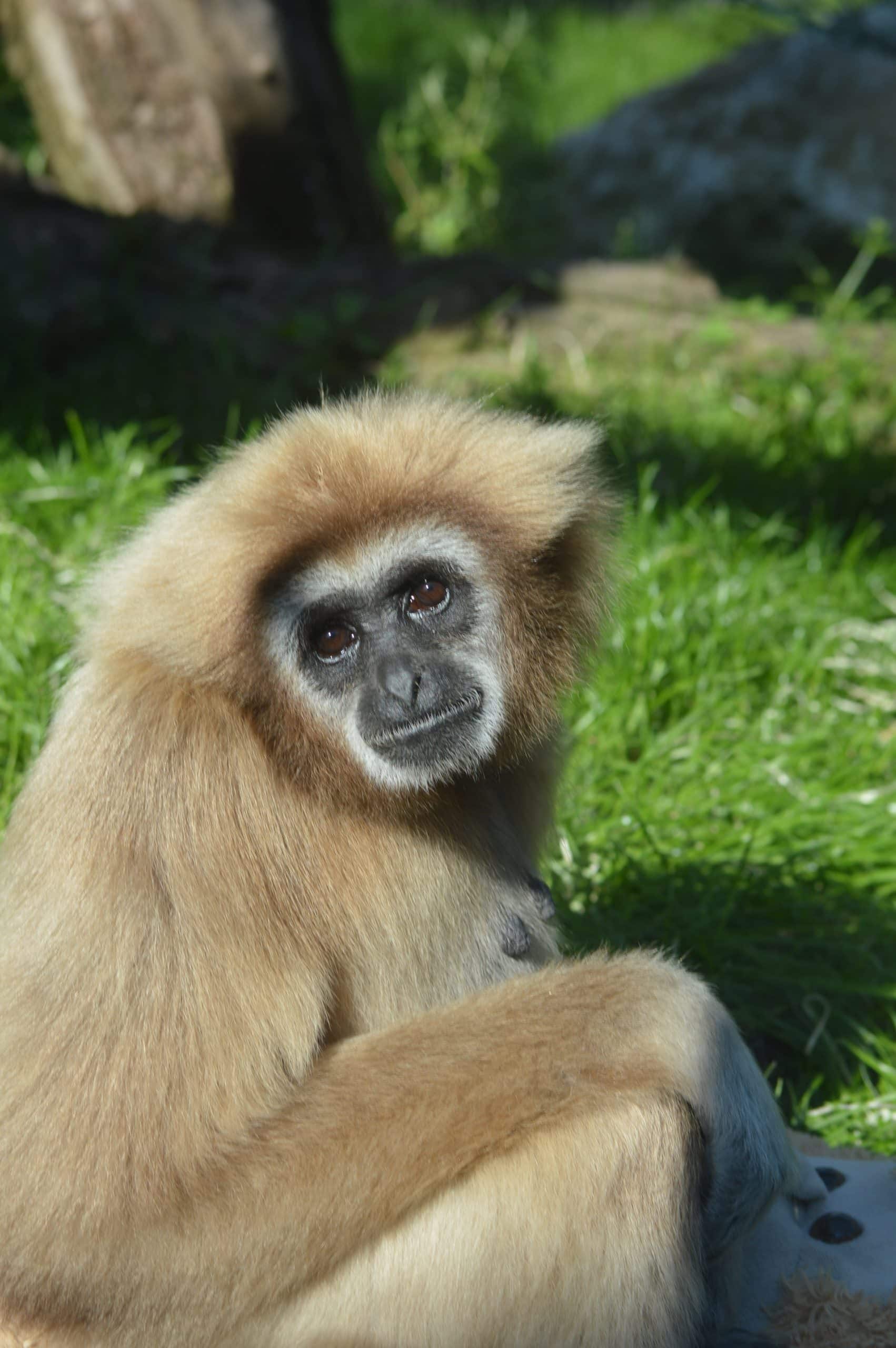The hands of gibbons are slender with long palms and strong long fingers. The back of the hand is usually light. The arms are very long compared to the body. They enable a large range when handling and when tearing off fruit. They help maintain balance when walking on the ground. The legs are short, it walks on the ground in an upright position with a swagger. It also runs along horizontal branches. The coat is yellow-brown, almost black in young individuals. It is very thick to keep warm even in the rainy season.
They are active during the day and climb down from treetops only exceptionally. They live in small family groups and are monogamous. They strengthen their relationships with loud singing – at the same time, it is an acoustic marking of their territory. If approached by another group, adult gibbons defend themselves with loud cries and aggressive behavior, with physical attacks rarely occurring. They spend their entire waking hours mainly taking care of their fur and looking for food, for which they usually go out under the guidance of the female. Every day they wander for almost ten hours through the crowns of trees, but they like to return to their favorite “sleeping” tree.
Every two to three years, the parent couple raises an offspring – twins are a rarity. Up to the age of five months, the cub clings tightly to the mother’s fur, then tries to handle itself. The cub is independent only at the age of two. They become sexually mature around the age of six to seven, when their parents kick them out and they are forced to find their own partner and territory.
The white-handed gibbon is the most active of all gibbons.
Gibbons cannot swim.
They move very quickly from branch to branch and jump a length of 8-10 m with one jump. This method of displacement is called brachiation. The upper limbs are 40% longer than the lower ones. They rarely come down to the ground, they feel more secure in the crowns of trees.



